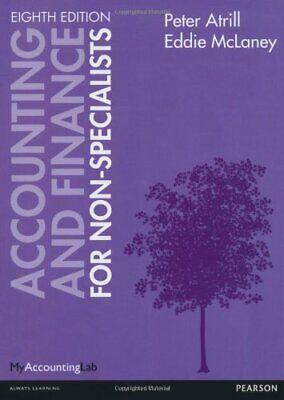Question
Maxwell Dash Inc. manufactures and assembles automobile instrument panels for both eCar Motors and Greenville Motors. The process consists of a lean product cell for
Maxwell Dash Inc. manufactures and assembles automobile instrument panels for both eCar Motors and Greenville Motors. The process consists of a lean product cell for each customers instrument assembly. The data that follow concern only the eCar lean cell.
For the year, Maxwell Dash Inc. budgeted the following costs for the eCar production cell:
| Conversion Cost Categories | Budget |
|---|---|
| Labor | $800,000 |
| Supplies | 475,000 |
| Utilities | 325,000 |
| Total | $1,600,000 |
Maxwell Dash Inc. plans 2,000 hours of production for the eCar cell for the year. The materials cost is $250 per instrument assembly. Each assembly requires 24 minutes of cell assembly time. There was no April 1 inventory for either Raw and In Process Inventory or Finished Goods Inventory.
The following summary events took place in the eCar cell during April:
a. Electronic parts and wiring were purchased to produce 470 instrument assemblies in April. b. Conversion costs were applied for the production of 420 units in April. c. During April, 400 units were started, completed, and transferred to finished goods. d. Of the 400 units completed, 370 were shipped to customers at a price of $800 per unit.
Required:
Question Content Area
1. Determine the budgeted cell conversion cost per hour. fill in the blank 1 of 1$ per hour
2. Determine the budgeted cell conversion cost per unit. fill in the blank 1 of 1$ per unit
Feedback Area
Feedback
1. Cell Conversion Cost Rate = Budgeted Conversion Cost Planned Hours of Production
2. Conversion Cost Per Unit = Manufacturing Time Cell Conversion Cost Rate
Question Content Area
3. Journalize the summary transactions (a) through (d). If an amount box does not require an entry, leave it blank.
| Transaction | Account | Debit | Credit |
|---|---|---|---|
| a. | Accounts PayableConversion CostsCost of Goods SoldFinished Goods InventoryRaw and In Process InventoryRaw MaterialsRaw and In Process Inventory | Raw and In Process Inventory | Raw and In Process Inventory |
| Accounts PayableAccount ReceivableConversion CostsCost of Goods SoldFinished Goods InventoryRaw and In Process InventoryAccounts Payable | Accounts Payable | Accounts Payable | |
| b. | Accounts PayableConversion CostsCost of Goods SoldFinished Goods InventoryRaw and In Process InventoryRaw MaterialsRaw and In Process Inventory | Raw and In Process Inventory | Raw and In Process Inventory |
| Accounts PayableConversion CostsCost of Goods SoldFinished Goods InventoryRaw and In Process InventoryConversion Costs | Conversion Costs | Conversion Costs | |
| c. | Accounts PayableConversion CostsCost of Goods SoldFinished Goods InventoryFixed AssetsRaw and In Process InventoryFinished Goods Inventory | Finished Goods Inventory | Finished Goods Inventory |
| Accounts PayableConversion CostsCost of Goods SoldFinished Goods InventoryRaw and In Process InventoryRaw MaterialsRaw and In Process Inventory | Raw and In Process Inventory | Raw and In Process Inventory | |
| d. Sale | Accounts PayableAccounts ReceivableConversion CostsFinished Goods InventoryRaw and In Process InventoryAccounts Receivable | Accounts Receivable | Accounts Receivable |
| Accounts PayableConversion CostsCost of Goods SoldRaw and In Process InventorySalesSales Returns and AllowancesSales | Sales | Sales | |
| d. Cost | Accounts PayableConversion CostsCost of Goods SoldFinished Goods InventoryRaw and In Process InventoryCost of Goods Sold | Cost of Goods Sold | Cost of Goods Sold |
| Accounts PayableConversion CostsCost of Goods SoldFinished Goods InventoryFixed AssetsRaw and In Process InventoryFinished Goods Inventory | Finished Goods Inventory | Finished Goods Inventory |
Feedback Area
Feedback
3. In lean manufacturing, there are fewer transactions to record, thus simplifying the accounting system. Some accounts are combined. For example, all in-process work is combined with raw materials to form a new account, Raw and In Process (RIP) Inventory and direct labor is also combined with other costs to form a new account titled Conversion Costs. Indirect labor is directly assigned to product cells; thus, less factory overhead is allocated to products. The cell conversion rate is similar to a predetermined factory overhead rate, except that it includes all conversion costs in the numerator.
Question Content Area
4. Determine the ending balance in Raw and In Process Inventory and Finished Goods Inventory. Raw and In Process Inventory: fill in the blank 1 of 2$ Finished Goods Inventory: fill in the blank 2 of 2$
5. Lean accounting is different from traditional accounting because it is more fill in the blank 1 of 6
complexsimplifiedsimplified
and uses fill in the blank 2 of 6
maximumminimalminimal
control. As a result, the number of transactions are fill in the blank 3 of 6
increasedreducedreduced
. In many lean operations, purchased materials are charged to a fill in the blank 4 of 6
raw and in process inventory accountmaterials and indirect labor accountraw and in process inventory account
. Direct labor is fill in the blank 5 of 6
included as a conversion cost of the celldisregarded in the cost allocation processincluded as a conversion cost of the cell
. Often, nonfinancial performance measures, such as fill in the blank 6 of 6
lead time or quality measures over and under production rateslead time or quality measures
, are used to monitor performance.
Step by Step Solution
There are 3 Steps involved in it
Step: 1

Get Instant Access to Expert-Tailored Solutions
See step-by-step solutions with expert insights and AI powered tools for academic success
Step: 2

Step: 3

Ace Your Homework with AI
Get the answers you need in no time with our AI-driven, step-by-step assistance
Get Started


